Y’all… it has been a CRAZY week here in my world. I’m furiously getting ready for my Halloween Party (see the invite here) and I was in a wedding this last weekend… pair that with a busy time at work and I skipped out on a few blog posts… this is the one I promised I’d have last Friday, and well… that didn’t happen, so here it is! I’m catching up this week on the blog with a few projects I’ve been working on, so stay tuned!
I’m one of those people who makes a GIANT mess when I am in the process of a project. So project cleanup takes almost as long as the project itself. I’ve just come to accept this as a fact of life and move on with it. So when we stained the shelves and an altar table for church (a post is coming!) in one week/weekend, this is what the floor of my garage looked like:
I told y’all here about my staining process and mentioned that I use old t-shirts as my staining rags. They work great, but the downside is that you get stain ALL OVER YOUR HANDS. The first few times I stained I tried to wear latex gloves, but it turns out… I hate wearing them. And they are hot. So I figured out that olive oil (or vegetable oil) removes the stain gently from your hands (I’m sure there is something chemistry related about why oil takes off oil based paints and stain which is oil based, but I’m an English major, so I’m happy just knowing that it does… I definitely don’t need to know why). So here’s what my hands looked like after wiping the stain from the shelves:
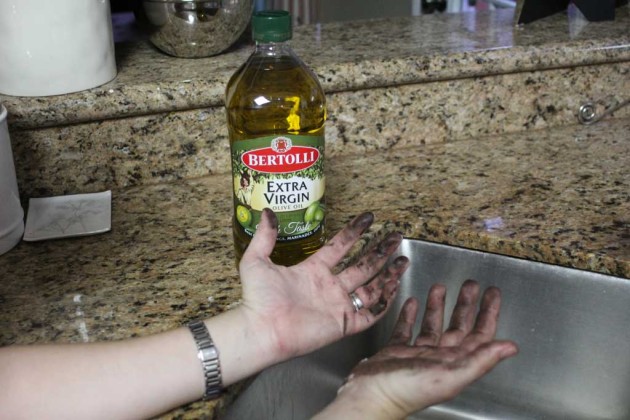 I usually have a cheap-0 bottle of vegetable oil in the garage to do this process, but my husband tossed it out because it looked pretty nasty and he didn’t know what it was. So until I replace it, he has to help me pour our normal cooking olive oil over my hands because he is not in favor of getting stain all over the bottle that we cook with… imagine that! And even so, this is definitely an easier and cleaner process if you have someone to help you by turning on the sink and pouring the olive oil and soap on your hands. However… it is totally possible. You know those Delta no-touch faucet commercials… I’m pretty sure they got that idea by watching me try to turn on my sink with my elbow.
I usually have a cheap-0 bottle of vegetable oil in the garage to do this process, but my husband tossed it out because it looked pretty nasty and he didn’t know what it was. So until I replace it, he has to help me pour our normal cooking olive oil over my hands because he is not in favor of getting stain all over the bottle that we cook with… imagine that! And even so, this is definitely an easier and cleaner process if you have someone to help you by turning on the sink and pouring the olive oil and soap on your hands. However… it is totally possible. You know those Delta no-touch faucet commercials… I’m pretty sure they got that idea by watching me try to turn on my sink with my elbow.
Anyway… (fair warning… this isn’t the prettiest process… so bear with the nasty pictures, I promise there is a clean one at the end!) Pour enough olive oil over your hands to fully coat them and spend about 20 seconds rubbing it in and scrubbing at the parts where the stain is thicker, it’ll turn your hands a gorgeous nasty earth brown color.
Now you have solved the stain problem, but oil and water don’t mix… so you have to solve the oil problem. Dawn to the rescue! (or any dish soap)
And finally wash all that with water. If all your stain isn’t off, rinse and repeat until clean. Although I’m pretty messy and I’ve never had it take me more than two rounds. And there it is, my not so dirty little secret, plus the olive oil makes your hands feel soft and smooth!
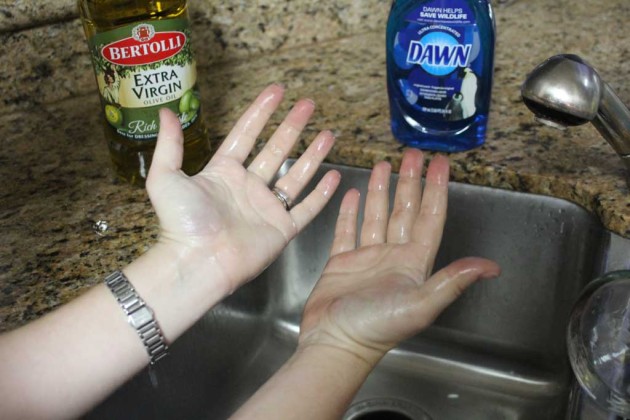

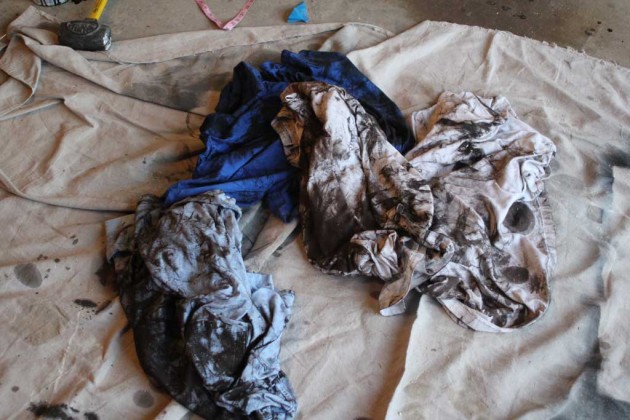

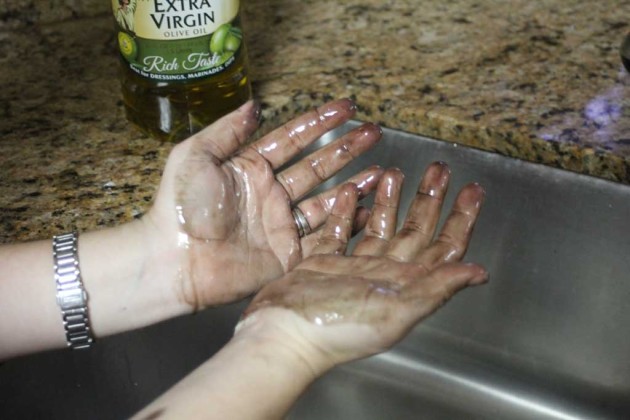
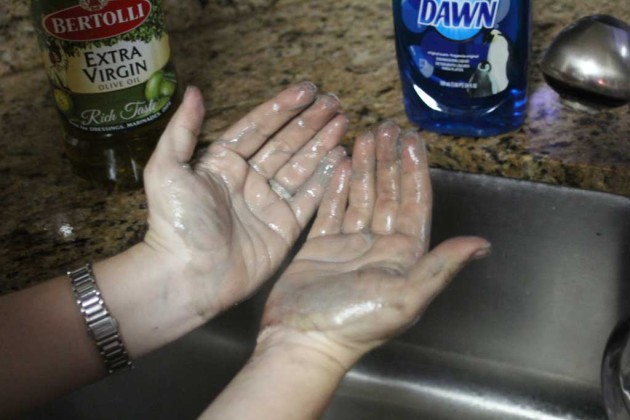
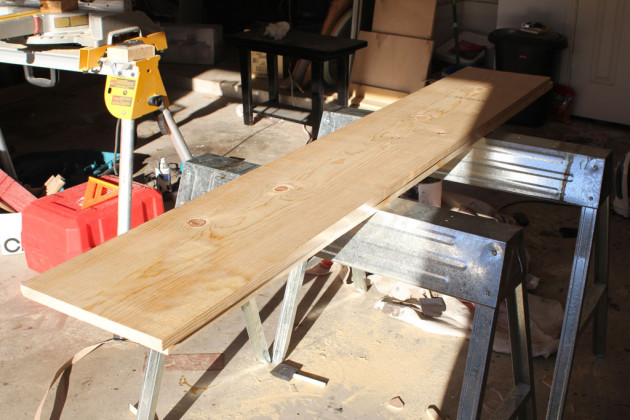
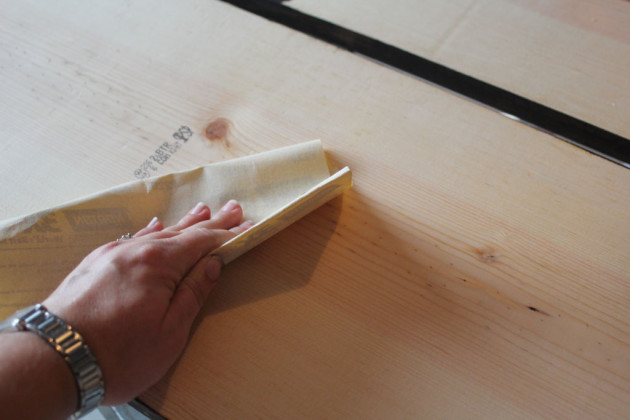
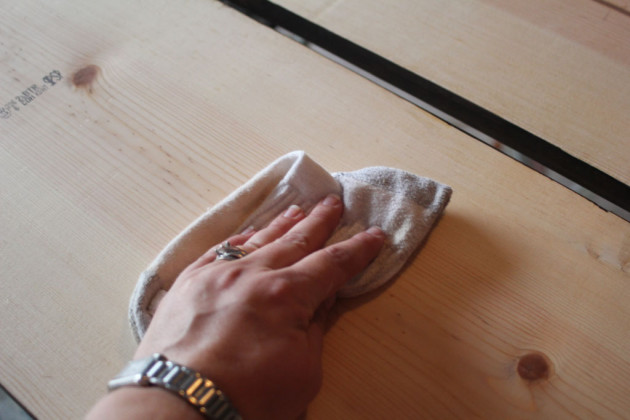
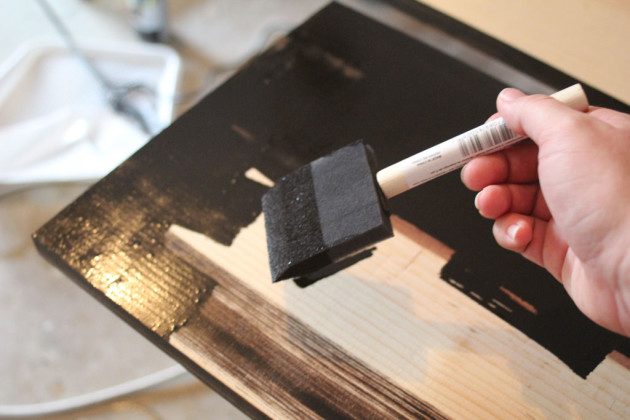
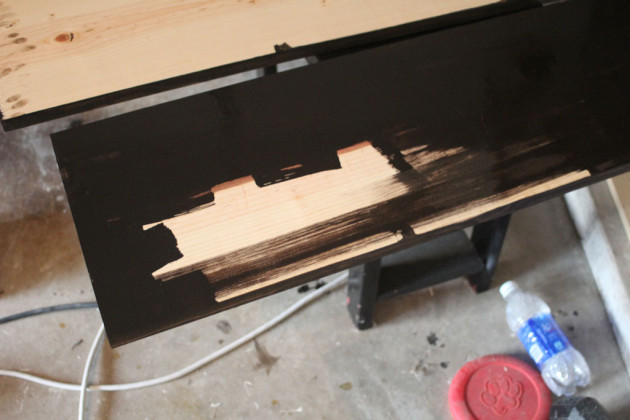
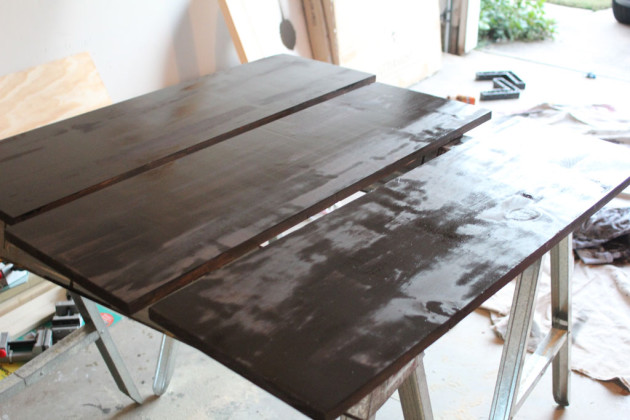
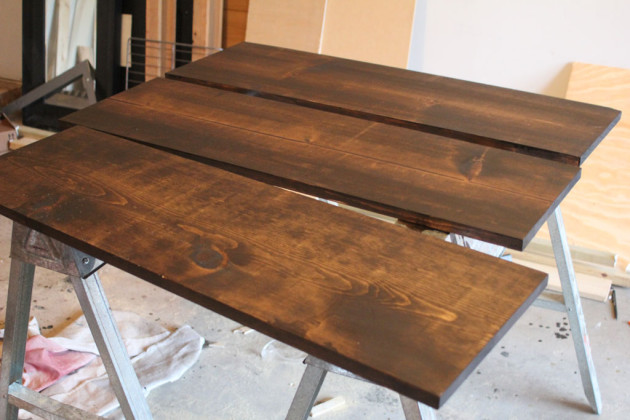
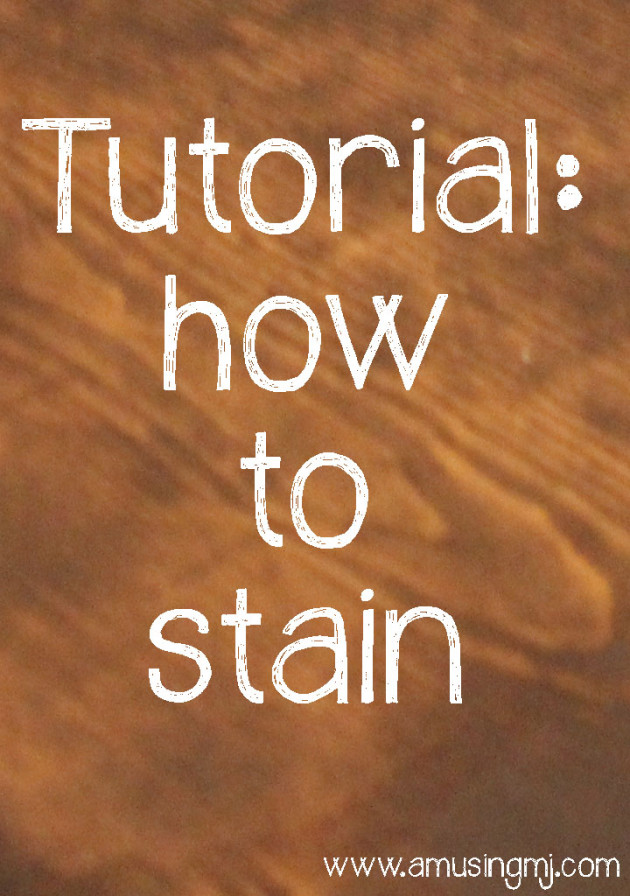
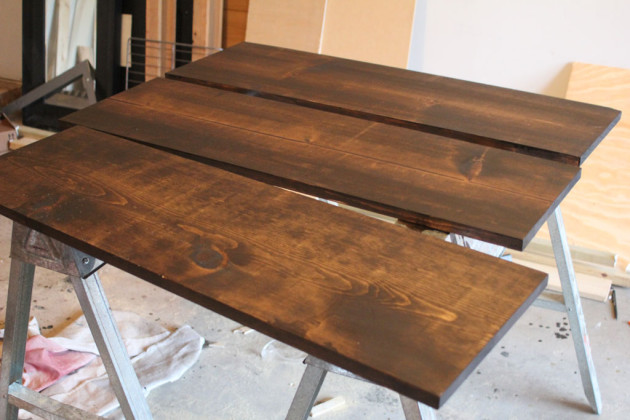
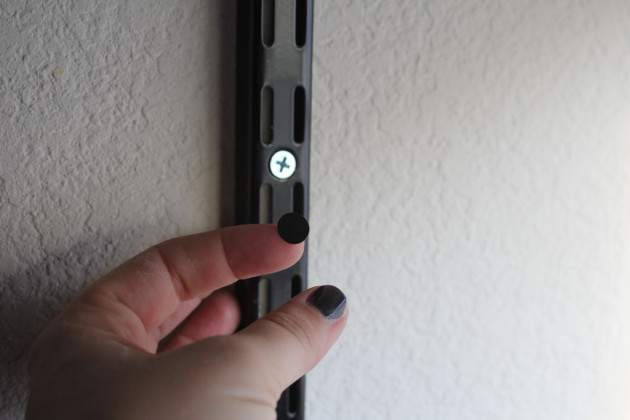
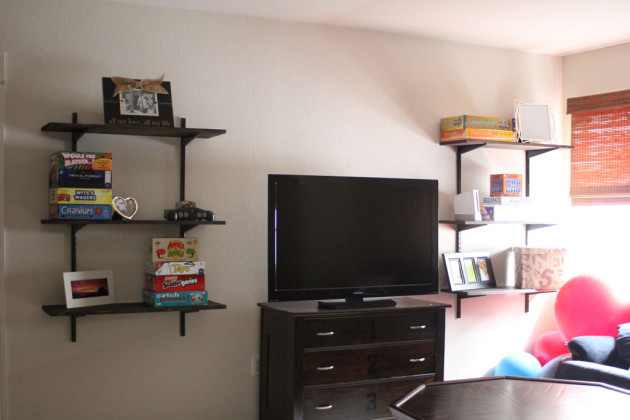
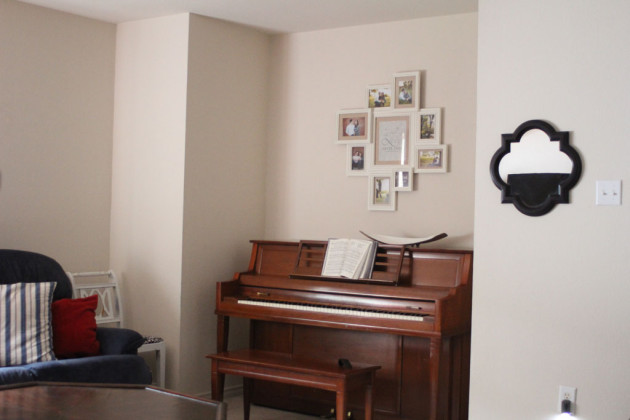

 Hi, I'm MJ! I'm a DIY kind of girl and this is where I share my projects. I'm taking you along for the ride as I learn how to do woodworking, sew, bake, and renovate!
Hi, I'm MJ! I'm a DIY kind of girl and this is where I share my projects. I'm taking you along for the ride as I learn how to do woodworking, sew, bake, and renovate! 




